Remember when the world seemed simpler, when certain sounds meant all was well with the universe? Before smartphones and digital notifications, the soundtrack of daily life was organic, mechanical, and wonderfully tactile. For those of us who grew up in the 1960s, these everyday noises weren’t just background—they were the reassuring heartbeat of American life, telling us that everything was exactly as it should be.
1. The Spin of a Vinyl Record Dropping onto the Turntable
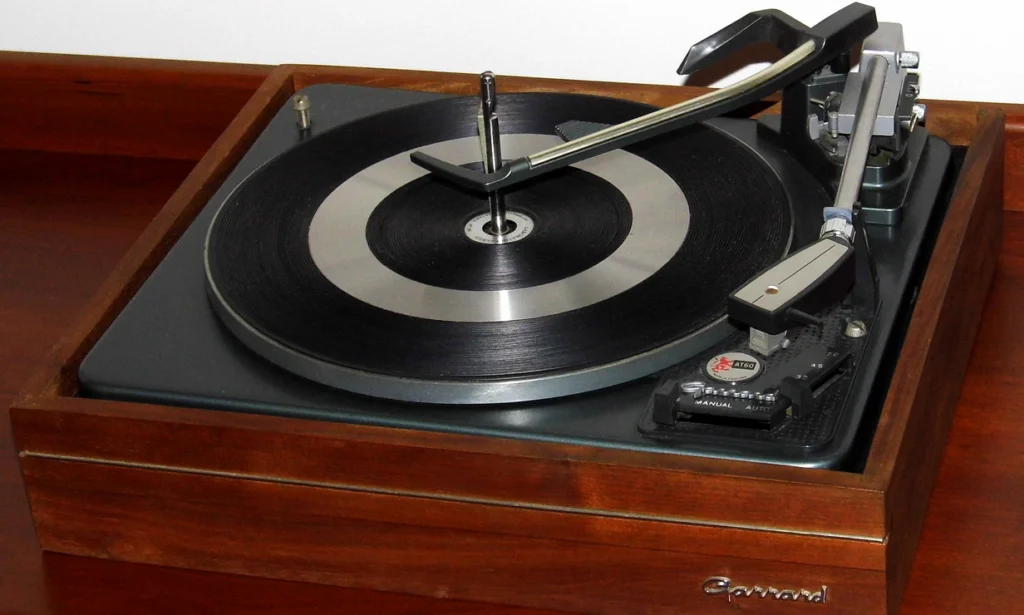
That initial soft thud followed by the gentle scratch of the needle finding its groove was practically a sacred ceremony in living rooms across America. The warm crackling that preceded your favorite Beatles or Supremes song created a moment of delicious anticipation that today’s streaming services simply cannot replicate. Those few seconds between dropping the needle and hearing the first notes taught us patience and appreciation for the artistry that was about to unfold. Roksan gives a comprehensive overview of these mystical, musical turntables that enchanted us so.
The ritual of handling records—sliding them carefully from their sleeves, holding them by their edges, and placing them gingerly onto the spindle—connected us physically to our music in ways that would be utterly foreign to today’s youth. The occasional skip or scratch became as familiar as an old friend, and we knew exactly where to expect them on our most-played albums. Families would gather around the console stereo on Sunday evenings, taking turns selecting the soundtrack for dinner, each selection saying something intimate about the chooser’s mood or personality.
2. The Manual Typewriter’s Decisive Clacking
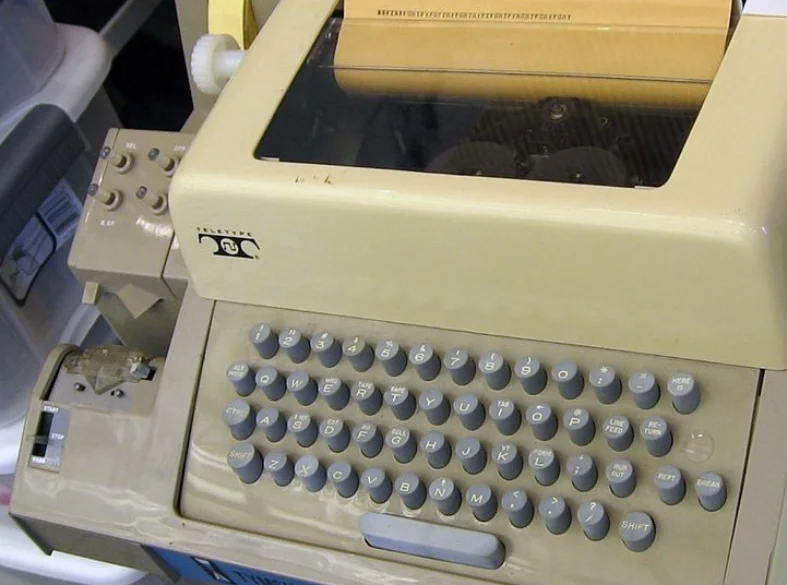
The authoritative click-clack of metal keys striking paper announced that important work was happening, whether in a bustling office or at the family desk. Each keystroke required commitment—there was no delete button—and the satisfying ding of the carriage return signaled both accomplishment and permission to continue to the next line. The rhythm of experienced typists became almost musical, a percussive testament to efficiency and purpose. Interestingly, CBS News reports that typewriters are making a return in some areas across the country.
The physical effort required to produce a document meant that words were chosen with care and deliberation, not fired off in haste as with today’s rapid-fire emails. The staccato symphony of secretarial pools created the soundtrack of American business, punctuated by the zip of paper being extracted from the roller at the completion of each page. Many a child fell asleep to the gentle lullaby of a parent finishing up work in the home office, the typing gradually slowing as the night grew deeper.
3. The Percolator Coffee Pot’s Morning Gurgle
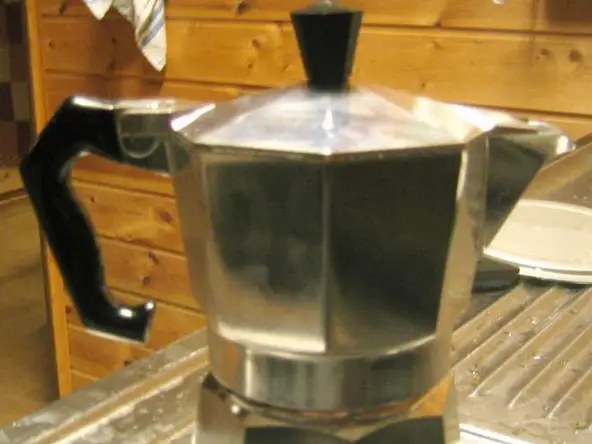
Long before programmable coffee makers or pod systems, the bubbling cadence of percolating coffee was the true alarm clock in American households. That rhythmic burbling grew stronger as the brew darkened, filling the kitchen with promises of alertness and possibilities for the new day. The final pop-pop-pop signaled readiness, a morning milestone that meant it was finally acceptable to engage in conversation. Serious Eats has an overview of the best percolators on the market today, for anyone wishing to brew up some nostalgia.
The percolator was democracy in action—everyone got the same robust cup, and waiting for that perfect moment to pour was a skill passed down through generations. The sound echoed through household routines, providing structure to chaotic breakfast times and weekend mornings alike. For many families, the absence of that familiar gurgle during power outages or camping trips created a strange disorientation, as if the day couldn’t properly begin without its permission.
4. The Metal Bell of a Gas Station Driveway
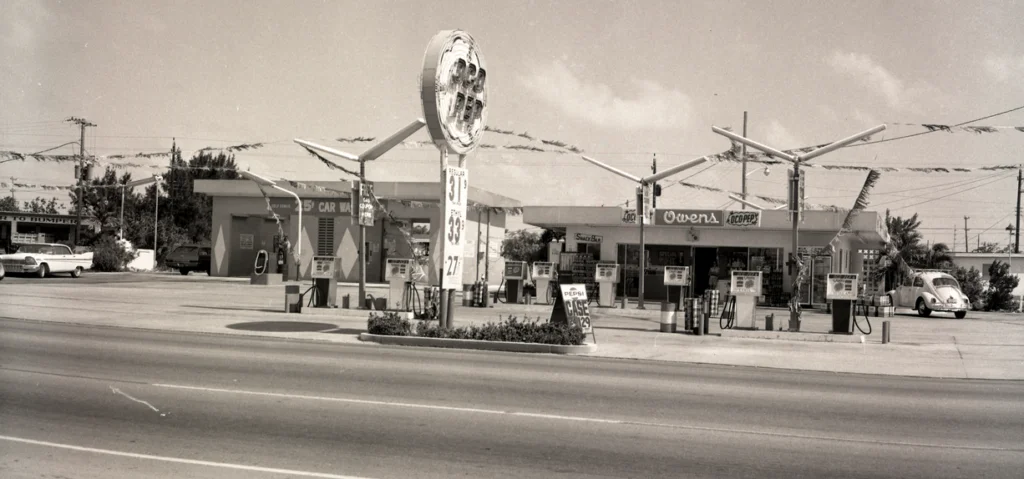
Rolling over the black pneumatic hose triggered that distinctive ding-ding, summoning an attendant who would clean your windshield and check your oil while filling your tank. That cheerful bell represented a level of service that seems impossibly quaint today, a reminder that once upon a time, you never had to pump your own gas. The sound was an invitation to brief but genuine human connection—a weather comment, a compliment on your car, or local news exchanged during the transaction.
The bell’s tone varied slightly from station to station, creating a subtle auditory landmark that told you exactly where you were even with your eyes closed. Children would beg parents to drive over the hose again and again, delighting in the power to make something happen simply by rolling over it. For travelers on long journeys, that bell welcomed them to new towns, a consistent feature in an unfamiliar landscape.
5. The Snap and Fade of a Polaroid Camera
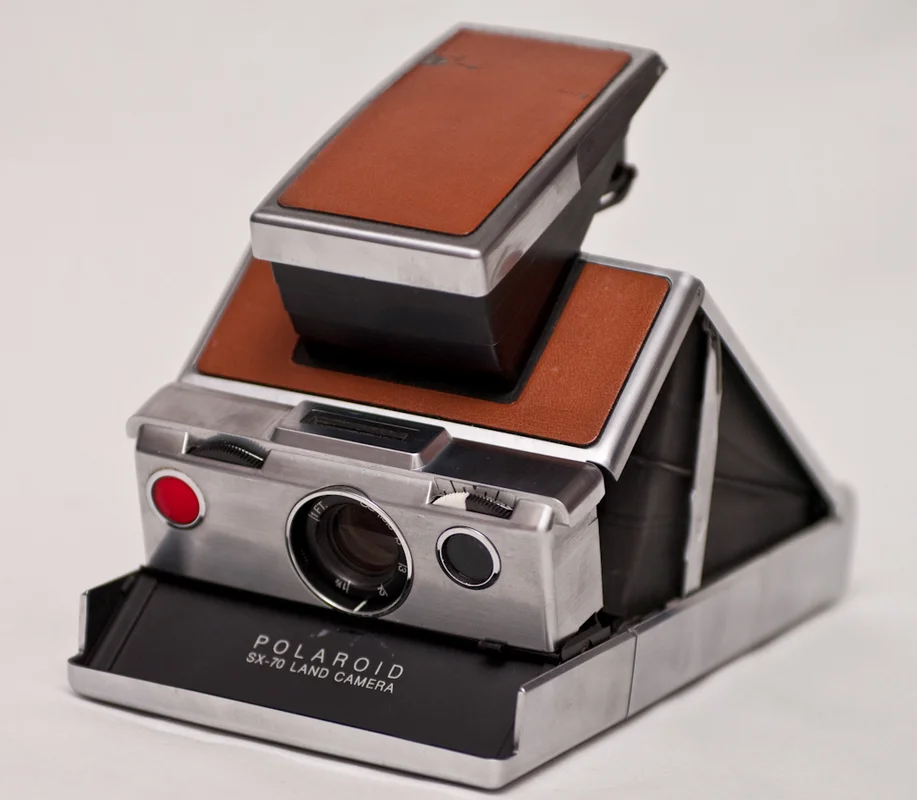
The mechanical whirr followed by the camera spitting out a gray square marked the beginning of a small miracle developing before your eyes. Everyone would gather around, watching intently as ghostly shapes slowly emerged into recognizable faces and scenes—photography as performance art. The anticipation built community, forcing everyone to pause together in a shared moment of wonder at this everyday bit of chemical magic.
“Don’t shake it!” someone would inevitably advise, though many of us did anyway, convinced we could hurry along the development process. Each photo was precious because it was instantaneous yet limited—unlike today’s endless digital snapshots, you had just a few frames in each expensive pack of film. The distinctive sound of a Polaroid camera meant something worth preserving was happening right now, elevating ordinary moments into occasions.
6. The Rotary Phone’s Circular Dialing Return
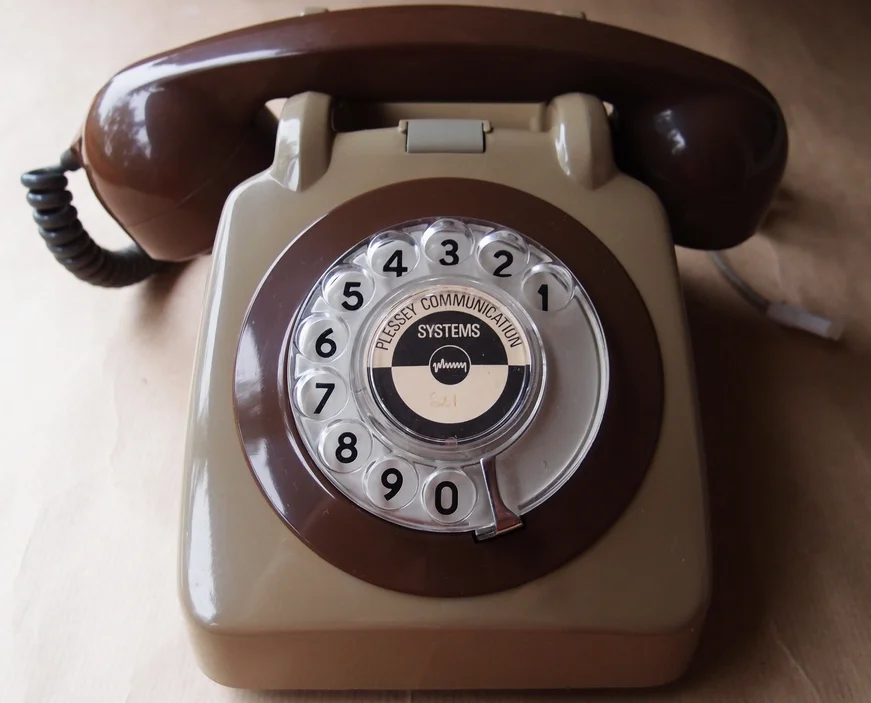
Each number required commitment as your finger pulled the dial around, followed by that satisfying mechanical whirr as it spun back home. The longer the number, the more rhythmic the process became—a simple local call required seven musical rotations, while long-distance added the drama of an area code. The tactile nature of dialing created a physical connection to the communication process, making wrong numbers more disappointing but correct connections more satisfying.
The sound was so ubiquitous that it became shorthand for “making a call” in radio and television programs of the era. Children would practice with disconnected phones, delighting in the perfect resistance of the dial and the mechanical precision of its return. For teenagers, the rotary dial was often the gateway to social life, each number dialed with trembling fingers as they called their crush or made weekend plans with friends.
7. The Delivery of Glass Milk Bottles at Dawn
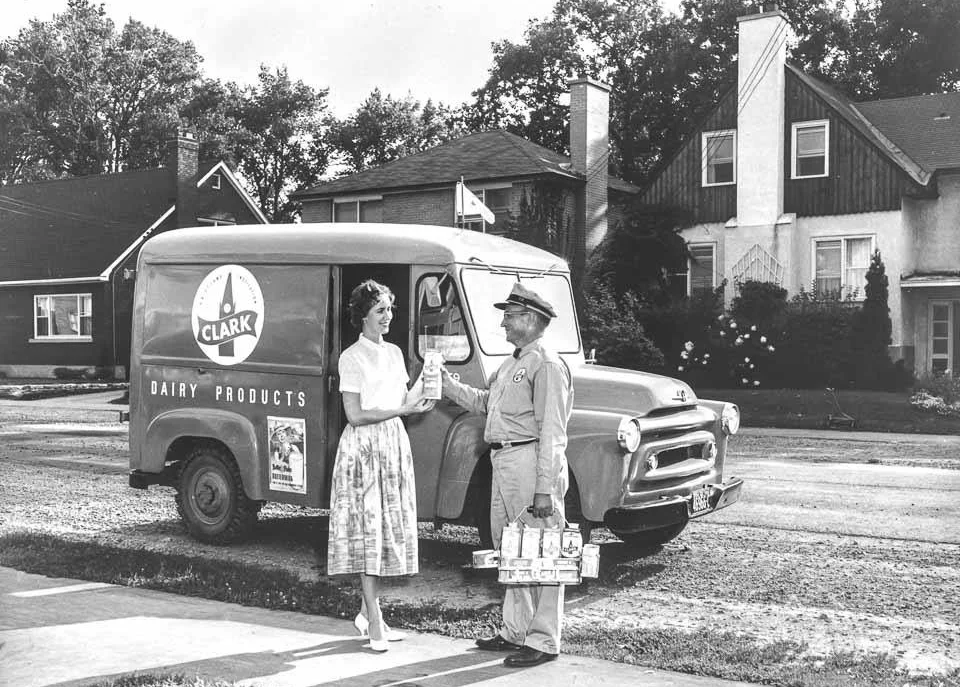
The gentle clink of bottles being exchanged in the metal milk box meant freshness had arrived while you slept, a small daily miracle. The milkman’s pre-dawn visits represented a world where necessities appeared almost magically, with little notes left for special orders and empty bottles whisked away. For light sleepers, the distinctive sound of the milk truck stopping house by house down the block served as a gentle timestamp—either a reminder to go back to sleep or a signal that the day was beginning.
That soft glass-on-metal sound represented extraordinary convenience in an era before 24-hour supermarkets became the norm. The predictable rhythm of delivery created a sense of security and abundance, regardless of weather conditions or world events. Children would race to be the first to bring in the bottles, fascinated by the thick cream that had separated at the top and the occasional holiday-colored foil caps.
8. The Neighborhood Lawn Mower Orchestra on Saturday Mornings

The distinctive buzz of push mowers starting up one by one created a weekend symphony that meant summer was in full swing and neighbors were taking pride in their property. The sound would begin early with the most ambitious house on the block and gradually spread as others were inspired (or shamed) into action. The smell of fresh-cut grass would mingle with the sound, creating a multisensory experience that defined suburban weekends.
Unlike today’s ear-splitting power equipment, the mowers of the ’60s had a lower, more mechanical growl that somehow seemed less intrusive. Children would follow behind fathers and older brothers, pretending to mow with sticks or toy versions while absorbing lessons about responsibility and routine maintenance. As the day progressed and more lawns were completed, the gradual quieting of the neighborhood signaled permission for afternoon leisure activities to begin.
9. The School Bell’s Authoritative Ring

That unmistakable electric bell cut through classroom murmurs with absolute authority, organizing days into predictable periods and unleashing controlled chaos into hallways exactly on schedule. Unlike today’s gentle electronic tones, the bells of the ’60s were unapologetically loud, designed to be heard over typewriters in office education classes and machinery in shop rooms. The sound created instant Pavlovian responses—pencils down, books closed, attention forward—that many of us can still feel decades later.
The final bell of the day unleashed a special kind of joy, a starting gun for freedom that sent children racing toward buses and bicycles. Different bell patterns signaled fire drills or special assemblies, creating an auditory code that students quickly learned to decipher. For teachers and students alike, the rhythm of bells created the essential framework for educational experiences, a shared timekeeper that everyone respected.
10. The TV Signing Off with the National Anthem

The solemn playing of “The Star-Spangled Banner” accompanied by patriotic imagery meant the broadcast day had officially ended—a firm bedtime enforcer parents appreciated. The static that followed created an unmistakable signal that nothing more would happen until morning, no matter how long you stared at the screen. For night owls and insomniacs, this soundtrack marked the transition to true late night, when the house fell silent except for the refrigerator’s hum and the occasional passing car.
The nightly ritual created a shared national moment, with television stations across the country performing the same ceremony at different times according to their time zones. Children would often stand at attention in their pajamas, practicing the formal respect they’d learned in school. The sign-off served as a technological sunset, a reminder that even television had limits and that some quiet hours were reserved for sleep and reflection.
11. The Sizzle of Dinner Being Prepared

The distinctive sound of meat hitting a hot skillet or vegetables dropping into boiling water announced that someone was transforming raw ingredients into a family meal. This daily concert of cooking sounds—chopping, sizzling, timer bells—created anticipation and drew family members kitchenward like a dinner bell without the actual bell. The soundtrack varied with the day’s menu but always signaled care and attention being poured into nourishment.
These preparation sounds meant someone was home, someone was in charge, and hunger would soon be satisfied. For latchkey kids arriving home from school, hearing these sounds upon entering the house instantly dispelled loneliness and created security. The gradual shift from preparation sounds to the quieter clinks of serving transformed the household energy, gathering everyone from their separate activities to a shared experience around the table.
12. The Slam of the Screen Door on Summer Days

That distinctive wooden clap followed by the metallic vibration of spring hinges announced comings and goings with democratic equality—no one could sneak through unannounced. Parents would inevitably yell “Don’t slam the screen door!” even as they recognized the sound as the heartbeat of summer freedom, children moving between indoor comforts and outdoor adventures. The rhythm of the door marked the cadence of the day, slowing down at mealtimes and bedtime, reaching frantic pace during neighborhood games.
The screen door’s slam was both percussion and permission—to enter for popsicles and bathroom breaks, to exit for sprinklers and bicycle races. Its sound carried across yards and through open windows, keeping parents loosely informed of their children’s movements without electronic surveillance. For many households, the final slam of the evening carried a touch of melancholy, signaling that another summer day had been fully lived and exhausted.
Life moves faster now, and many of these sounds have been engineered away in the name of convenience, efficiency, or noise reduction. But for those who grew up in the 1960s, these everyday noises weren’t just background—they were the reassuring indicators that all was right with the world. They marked time, built anticipation, and connected us to our communities in ways that today’s digital notifications simply cannot match. Perhaps in remembering these lost sounds, we can recapture not just nostalgia, but appreciation for the sensory richness of a less electronic, more mechanical world.



